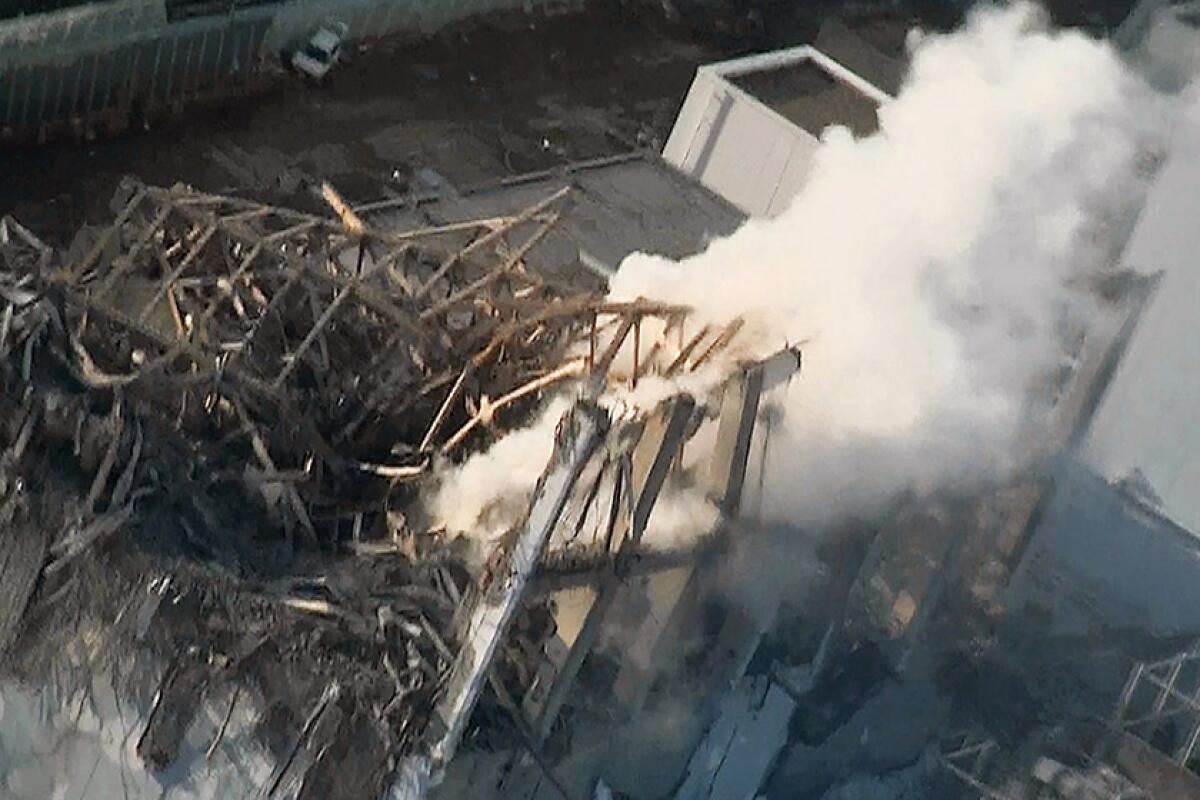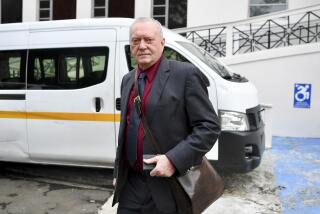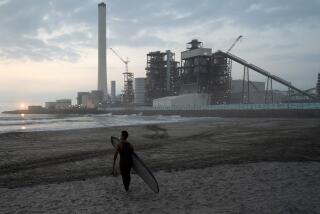3 executives not guilty in Fukushima disaster case, Japanese court rules

- Share via
TOKYO — A Japanese court on Thursday ruled that three former executives for Tokyo Electric Power Co. were not guilty of professional negligence in the 2011 Fukushima nuclear plant meltdown. It was the only criminal trial in the disaster that has kept tens of thousands of residents away from their homes because of lingering radiation contamination.
The court said that former Tepco Chairman Tsunehisa Katsumata, 79, and two former executives were also not guilty of causing the deaths of 44 elderly patients whose health deteriorated during or after forced evacuations from a local hospital.
The executives were charged with failing to foresee the tsunami that struck the plant after an earthquake and for failing to take preventive measures that might have protected the Fukushima Daiichi plant on Japan’s northeastern coast.
Katsumata and codefendants Sakae Muto, 69, and Ichiro Takekuro, 73, pleaded not guilty during the trial’s opening session in June 2017. They said predicting the catastrophic tsunami was impossible.
Three of the plant’s reactors had meltdowns after the magnitude 9 earthquake and tsunami on March 11, 2011, spreading radiation into surrounding communities and into the sea.
Prosecutors in December demanded a five-year prison sentence for each executive, accusing them of professional negligence for not taking sufficient measures to guard against the threat of a tsunami despite knowing the risks.
Hiroyuki Kawai, a lawyer representing the more than 5,700 Fukushima residents who filed the criminal complaint with prosecutors, said before the ruling that he expected the legal battle to last about a decade because the losing side will appeal.
“This is only the beginning of a major battle,” he said at a rally before Thursday’s ruling. “Our ultimate goal is to eradicate dangerous nuclear plants that have thrown many residents into despair.”
Prosecutors told the court that the three defendants had access to data and scientific studies that anticipated the risk of a tsunami exceeding 30 feet that could trigger a loss of power and severe accidents.
Defense attorneys for the Tepco executives told the court that the tsunami projection was not well-established. They said the actual damage was larger than projected, and that if Tepco had taken steps based on the projection, it would not have prevented the disaster.
Prosecutors said Tepco was already conducting a tsunami safety review following a 2007 earthquake in Niigata, another location in northern Japan, and the three former executives routinely participated in that process. In March 2008, a Tepco subsidiary projected that a tsunami as high as 47 feet could hit Fukushima, prompting the company to consider building seawalls.
Prosecutors presented hundreds of pieces of evidence including emails between safety officials and the two vice presidents that suggested increasing concern and a need for more tsunami measures at the plant. More than 20 Tepco officials and scientists testified in court.
Government and parliamentary investigations said Tepco’s lack of a safety culture and weak risk management, including an underestimation of the tsunami risks, led to the disaster. They said Tepco colluded with regulators to disregard tsunami protection measures.
The company has said that it could have been more proactive with safety measures, but that it could not anticipate the massive tsunami that crippled the plant.
Tepco has spent $83 billion on compensation related to the disaster. It needs to spend an estimated $74 billion to decommission the plant and $55 billion for decontamination.
More to Read
Sign up for Essential California
The most important California stories and recommendations in your inbox every morning.
You may occasionally receive promotional content from the Los Angeles Times.









